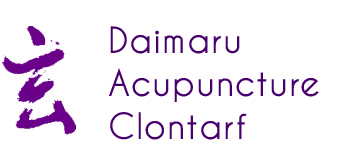

January 26th, 2011 | Posted in 1 How Acupuncture Works.
Acupuncture has become increasingly recognised and is most known for it’s treatment of pain. It is also used in the acupuncture clinic for many treatments other than pain where it is equally successful.
Numerous scientific studies have shown that acupuncture can alleviate muscle pain better than drugs and other conventional treatments. The needles stimulate those parts of the brain involved in pain perception.
They believe that the speed of response from acupuncture suggests nerve mediation. Acupuncture triggers the release of endorphins and other pain-blocking chemicals by the brain. This would account for the various reflex, or ‘trigger’ points so important in acupuncture. Pain felt at some site away from where the pathological change is actually occurring is called ‘referred pain’. Referral of pain can occur from an internal organ to the skin; from muscles or joints to the skin, or from one patch of skin to another. In referral of pain, transmission usually occurs by way of ‘relay cells’ to a place which lies within the area suplied by nerves arising from the same part of the spinal cord as the primary site of disease. This can explain how acupuncture points on the foot, for example, can have an influence on a distal part, such as the head, for a headache.
Another theory shows that the nerve fibres associated with pain are mostly ‘fine’ and conduct impulses slowly, but some ‘large’ rapidly conducting fibres are also involved. It is probable that acupuncture stimulation predominantly causes large fibre activity which is not sensed as painful but which ‘shuts the gate’ i.e. it prevents the linking nerve cell passing pain sensations which arise from the site of disease.
From the Western viewpoint, it may be that acupuncture affects the nervous system by stimulating the release of endorphins, naturally produced chemicals in the body that block pain signals in the brain and spinal cord.
Acupuncture treats the symptoms of pain but also treats the underlying or ‘root’ cause – an imbalance of c’hi – somewhere in the patient’s energetic system, so that person not only feels pain relief but also a general sense of well-being.
The World Health Organization (WHO)
WHO now recognizes more than forty-three medical problems that can be relieved by Acupuncture, including the following, associated with pain:
And many, many more.
When your acupuncturist tells you that you have “Spleen Qi Deficiency” you might just stare back at him or her blankly not understanding a word of how that explains the issues that you are seeking to resolve.
From a Chinese Perspective the ‘Spleen/Pancreas’ involves the physical spleen, the pancreas, the spleen acupuncture meridian, spleen related disharmonies (or patterns), western medicine spleen/pancreas related diseases such as diabetes and chronic fatigue, and a range of health issues that arise from the spleen related disharmonies from a TCM perspective. Chinese Medicine uses meridians named after and related to our physical organs to treat disease and imbalances in the body. The organ names are there to help describe the function of the related meridian and also to describe the myriad of relationships that exist in our bodies and between us and our environment. Since acupuncture is a ‘holistic’ treatment, it is often these connections and relationships that form the basis of the acupuncture treatment.
Other ‘spleen’ problems, such as stomach cancer, etc. will require a more aggressive treatment and you will be referred to your GP for further diagnosis and treatment. If you have any major illness, it is always advisable to check it out with your GP.
This explanation of how TCM works in relation to the Spleen can be extended to all our other body systems and organs. Classical oriental acupuncturists have, for many hundreds of years, explained acupuncure as invoking energy changes in a system of conducting pathways: the acupuncture meridians.
